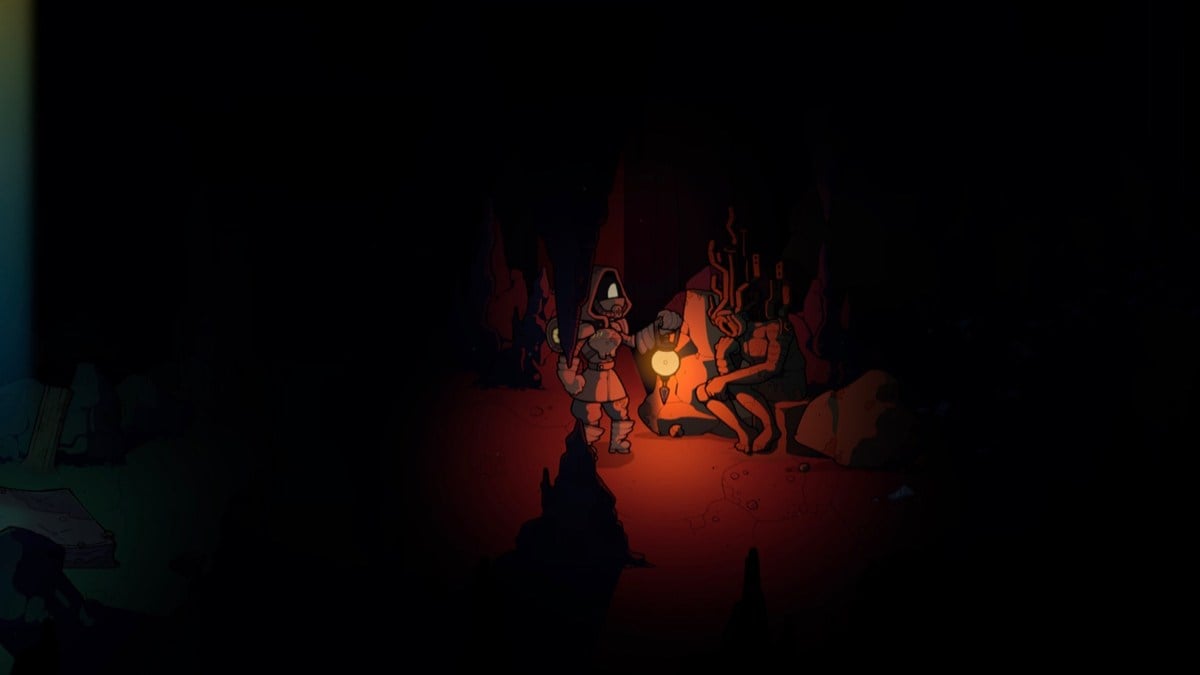Some Distant Memory, a new dystopian exploration game from Galvanic Games, was just released on Nintendo Switch and on Steam on November 14th.

What is Some Distant Memory?
Well, I can tell you first hand what Some Distant Memory is not, and it is not your typical story-driven puzzle game. Oh sure, there is a mystery here but the primary role of the person playing this particular game is just to explore and let the story unfold. No frustrating puzzles or complicated combination of controller moves required here. Don’t get me wrong, I am a sucker for challenging video games but sometimes you just want to chill and enjoy a good creative story and this is exactly what this game allows the player to do. This is how the game developers describe Some Distant Memory:
- A non-violent, character-driven story.
- Lots of mysteries to uncover, from the cause of the fall of civilization, to the glitches of your computer, and the fates of the people who lived in the house centuries before.
- A story that moves at your pace. Explore freely, discover new artifacts, and move onto the next chapter when you’re ready.
- So many feelings. Discover stories of love, growth, loss, and grief as you explore the house and your relationships with ARORA and the commander.
- A great soundtrack by Toytree (Amos Roddy), the composer for Strafe and the award-winning Kingdom, Kingdom: New Lands, and Kingdom: Two Crowns.
In short, the game is set in the future after an algae bloom has all but made planet Earth uninhabitable and there are only two remaining human colonies on Earth. You play the game as a Professor who is searching for the lost city of Houston. At your side is an Artificial Intelligence (AI) called ARORA who helps you interpret and fill in the blanks between artifacts as you find them in your explorations. If you find enough artifacts, ARORA will setup a “memory simulation” which attempts to show you what the AI thinks happened at that location with those artifacts. It’s a little bit like the saying “if these walls could talk,” except in this case the AI technology is literally allowing the walls and artifacts to talk and tell the story of what happened in small chunks along the way. It’s a very creative way to tell the story.

What Is The Gameplay Like?
Controls for the game are extremely simple on the Nintendo Switch. You move around with stick controls and the map and scanning functions are assigned to dedicated buttons which you are taught early on as part of the game sequence. So like I said earlier, there is no steep learning curve here with controls and no fast twitch or complicated combination of button hits required…just a relaxing exploration of a lost city.

How About Graphics and Sound?
The developers did a great job with the soundtrack on this game. The music is matched up well with the environment or the scene, but while you are exploring it is just there in the background melting in. This is pretty critical in my opinion because for an exploration game like this one you want to be able to explore and not be distracted or get tired of am overly-repetitive game soundtrack. It’s a tough line to walk but I think they managed to nail it pretty well. The sound effects are also done well. As you are shown scenes from the past, the dialog is simulated with unintelligible voice-like sounds while the actual text of what is being said is displayed on the screen. Sure, they could have recorded the actual dialog as sound bytes but then you would have to go back and re-listen if you didn’t catch every word that was said. I like how they implemented it with the visual text as it is always clear exactly what is going on with the dialog this way. It keeps the game focus on the story.
Will I Like The Story?
There is a very strong environmental theme to the story, but that kinda makes sense given the dystopian nature of this type of game…something has to go wrong right? The game does a pretty good job at both hitting you over the head with and presenting you with information and artifacts in a more subtle way concerning the environmental elements of the plot. Regardless of how you feel about this topic I think you will find the method of storytelling both engaging and extremely creative. I as player I thoroughly enjoyed it, very well done.
Verdict
This is not your typical Nintendo Switch game. Some Distant Memory was designed to be a story-driven exploration game so the pace is pretty much in the hands of the player. The game mechanics that are used as the player’s main tools for exploration (physically walking around, scanning your nearby environment and inspecting artifacts) is woven in very nicely with the story that is ultimately being told. The technology aspect of the story is also well thought out and plays a significant role in the game. This is a game that can easily be finished in an afternoon and there isn’t a lot of re-play value once you know the whole story. But that being said, both the story and the visuals and methodology used to tell that story are really compelling and make the value proposition for this short exploration game very strong. If you are in the market for a really good story (some history, science, technology and a bit of romance) and welcome the change of pace that an exploration game like this provides then I do not think you will be disappointed.
Some Distant Memory is available now from the Nintendo Switch eStore and from Steam for $14.99.
Disclaimer: A download code for Some Distant Memory for Nintendo Switch was provided for the purpose of this review, but Galvanic Games had no input into the review content.



